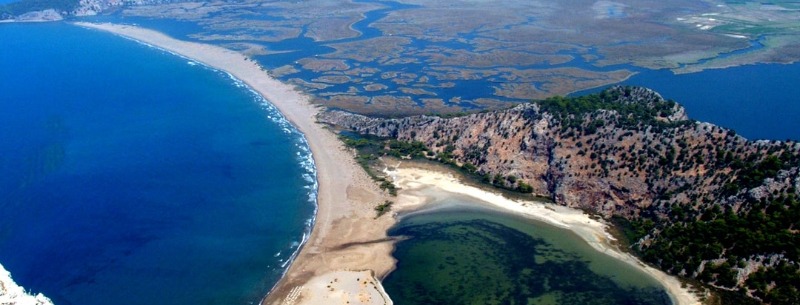Most Beautiful Beach Towns in Turkey
Turkey is a land that offers many vacation attractions. It is a country that appeals to all tastes and budgets, with a tremendous range of archaeological, historic, scenic, and recreational attractions blended with the traditional warm hospitality of the Turkish people.
Turkey offers the Turquoise Coast, with the sunny beaches and clear blue water of the Mediterranean; the Black Sea region, with lovely untouched beaches and fishing villages; and Eastern Turkey where vast mountain scenery and the remains of ancient civilizations invite exploration.
Alanya Beaches
Until fifteen years ago, Alanya was a sleepy coastal town with no more than a handful of flyblown hotels. Now it’s one of the Mediterranean coast’s major resorts, a booming place that has fortunately managed to hold on to much of its character and is much less crowded than Side, even in midsummer.
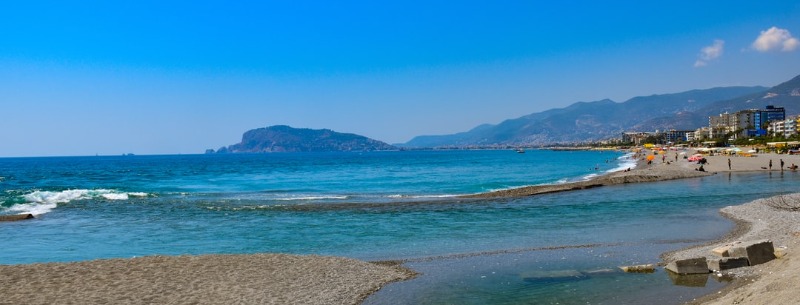
Alanya’s beaches, though not particularly clean, are at least extensive, stretching 3km west and 8km east.
Finer sand and fewer crowds can be found 23km away on the road to Side at Incekum (meaning “fine sand”), still a beautiful spot despite recent bouts of the hotel buildings.
Cleopatra’s Beach, on the western side of the peninsula, is one of the best-known beaches. It’s sandy, pleasant, and more secluded than the other town beach on the eastern side. 2 hrs from Antalya Airport.
Ayvalik Beaches
Ayvalik, 2km west of the main coast road, is a small fishing port that also makes a living from olive-oil production and low-key tourism; it makes a nice base for beach lounging and ruin-spotting at Bergama, 70km southeast.
Refounded during the 1400s on ancient ruins, Ayvalak suffered two serious earthquakes last century, though the most devastating effect on the town occurred when its mainly Greek inhabitants were kicked out during the exchange of populations that followed the Greek-Turkish war of 1920-22.
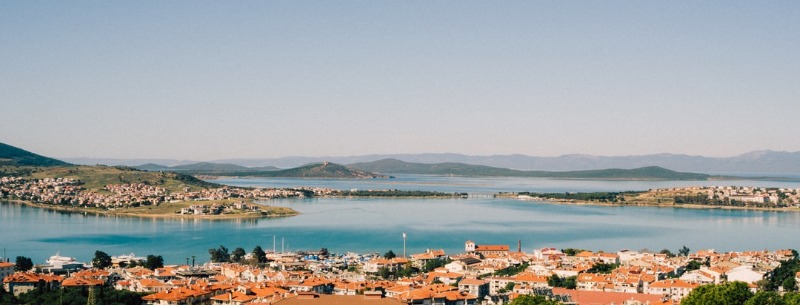
There’s not a great deal to see, though its tangle of central streets, lined with terraces of sumptuous Greek houses and clattering with speeding horsecarts, is worth a wander, and there are some decent beaches in the surrounding area
The tourist office is about fifteen minutes’ walk south of the town center on the main coast road, but you’re more likely to use the information kiosk on the seafront (June-Sept).
About 6km south of Ayvalik, Sarimsakli (literally “Garlic Beach”) is a resort development accessible by dolmus or municipal bus.
Across the bay from Ayvalak, the island of Cunda (aka Alibey ) is also a good day-trip destination, with a couple of stretches of beach on its west and north edges and some excellent harbourside fish restaurants in a quaint old Greek village. The best way to get here in summer is by boat, though at other times you’ll have to rely on the roughly hourly bus service from Ataturk Square or a taxi across the causeway connecting Cunda to the mainland.
Dalyan Beaches
Dalyan, 7km off Highway 400, is one of the calmer resorts along this stretch of coast, and a good base for surrounding attractions.
Life here centers on the Dalyan River, which flows past the village: the one drawback in the summer months is mosquitoes, especially along the riverbank, for which the area has been notorious since antiquity.
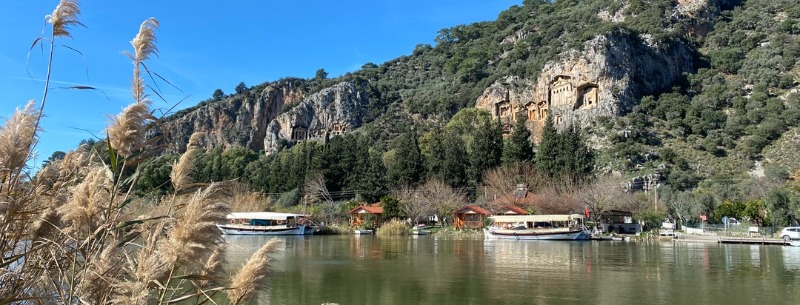
Istuzu Beach, a twenty-minute ride by regular boat service from Dalyan, is the breeding ground of the loggerhead turtle (May-Oct: no admission at night). During the day the beach is open to the public, and is a good place to swim and sunbathe, although you should be careful of disturbing the turtle eggs and nests, which are easily disrupted.
Datca Beaches
Although a little staid, Datca, 30km west of Marmaris, is a great deal calmer than Bodrum or Marmaris. It’s essentially the shore annex of inland Resadiye village, but, thanks to visiting yachts people and package operators, has outgrown its parent.
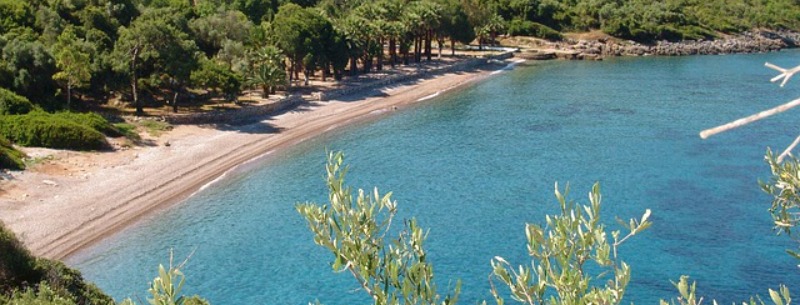
The single main street, crammed with carpet shops, meanders between two sheltered bays separated by a hillock and then a narrow isthmus. There’s little to do other than swim and sunbathe.
The east beach, part sand, part cement quay with cafes, is quieter but the cleanliness is suspect.
The west beach, mixed pebble, and sand is acceptable and gets better the further you get from the yachts. The nearest good beaches are Ozil (15km), Aktur (30km), and Perili Kozk (15km) on the road to Marmaris.
Gelibolu Peninsula
Though endowed with some fine scenery and beaches, the slender Gelibolu peninsula (Gallipoli), which forms the northwest side of the Dardanelles, is mainly known for its grim military history.
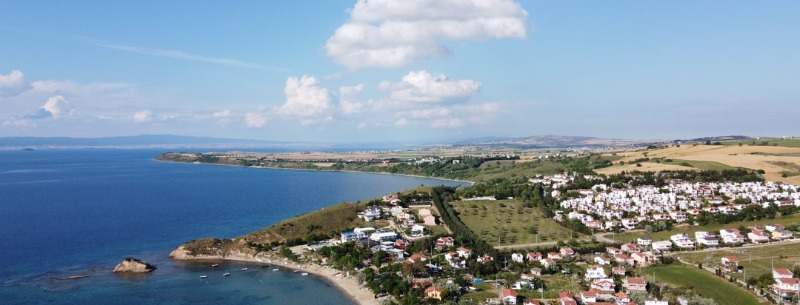
In April 1915 it was the site of a plan, devised by Winston Churchill, to land Allied troops, many of them Australian and New Zealand units, with a view to their linking up to neutralize the Turkish shore batteries controlling the Dardanelles. It was a harebrained scheme and it failed miserably, with massive casualties.
Nevertheless, this was the first time Australian and New Zealand soldiers had seen action under their own commanders, and the six months they were dug in here has subsequently been seen as the respective countries’ “coming of age” as sovereign states; the date of the first landings, April 25, is celebrated as ANZAC Day.
Kusadasi Beaches
Kusadasi is Turkey’s most bloated resort, a brash coastal playground that extends along several kilometers of the seafront. In just three decades its population has swelled from 6000 to around 50,000, though far fewer stay year-round.
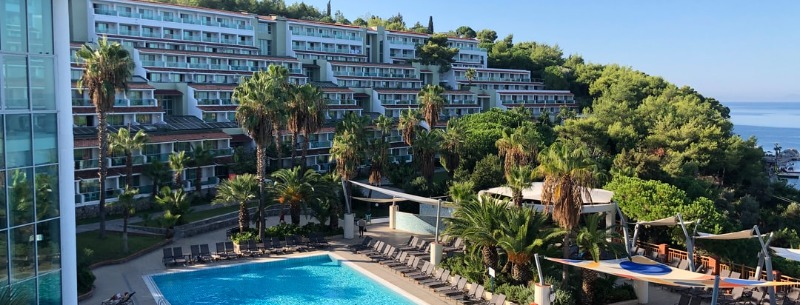
The town is many people’s introduction to the country: efficient ferry services link it with the Greek islands of Samos and Mikonos, plus the resort is an obligatory port of call for Aegean cruise ships, which disgorge vast numbers in summer – who delight the local souvenir merchants after a visit to the ruins of Ephesus just inland.
Liman Caddesi runs from the ferry port up to Ataturk Bulvari, the main harbor esplanade, from which pedestrianized Barbaros Hayrettin Bulvari ascends the hill. To the left of here, the Kale district huddled inside the town walls, is the old and most appealing part of town, with a namesake mosque and some fine traditional houses.
Kusadasi’s most famous beach, the Kadinlar Denizi (Ladies’ Beach), around 3km southwest of town, is a popular strand, usually too crowded for its own good in season.
Guvercin Island, closer to the center, is mostly landscaped terraces, dotted with tea gardens and snack bars, but the swimming is rocky.
For the closest decent sand, head 500m further south to the small beach north of Yilanci Burnu, or 7km north of town to Tusan beach; both are served by all Kusadasi-Selcuk dolmuses, as well as more frequent ones labeled Sehir Ici.
Much the best beach in the area is Pamucak, at the mouth of the Kucuk Menderes River 15km north, an exposed, 4km stretch of sand that is as yet little developed; it’s served by regular dolmuses from both Kusadasi and Selcuk in season.
Marmaris Beaches
Marmaris rivals Kusadasi as the largest and most developed Aegean resort. Its huge marina and proximity to Dalaman airport mean that tourists pour in more or less nonstop during the warmer months.
According to legend, the place was named when Suleyman the Magnificent, not finding the castle here to his liking, was heard to mutter “Mimari as ” (“Hang the architect”) – a command which should perhaps still apply to the designers of the seemingly endless high-rises.
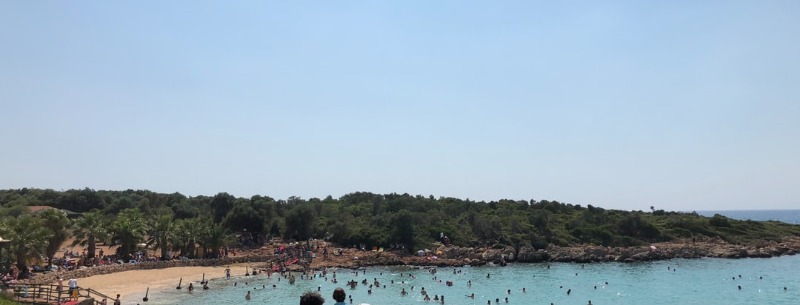
Ulusal Egemenlik Bulvari cuts Marmaris in half, and the maze of narrow streets east of it is home to most things of interest, though little is left of the sleepy fishing village that Marmaris was a mere two decades ago.
The bazaar is now little more than an area of covered streets, and only the Kaleici district, the warren of streets at the base of the tiny castle, offers a pleasant wander. The castle museum has a worthwhile archeology and ethnography collection.
Icmeler is in the bay of Marmaris, surrounded by green hills and next to the Marmaris resort, home-away-from-home of a beer belly and bad tattoo man. Icmeler is newer, smaller, and marginally quieter than hideous Maramaris. Its beach is half a mile long, with a traffic-free promenade stretching from Marmaris all way round the bay to Iзmeler to help the beer bellies stagger home.
Olu Deniz Beaches
Olu Deniz is about two hours on foot from Kaya Koyu – through the village, over the hill, and down to the lagoon – although it is also served by frequent dolmuses from Fethiye.
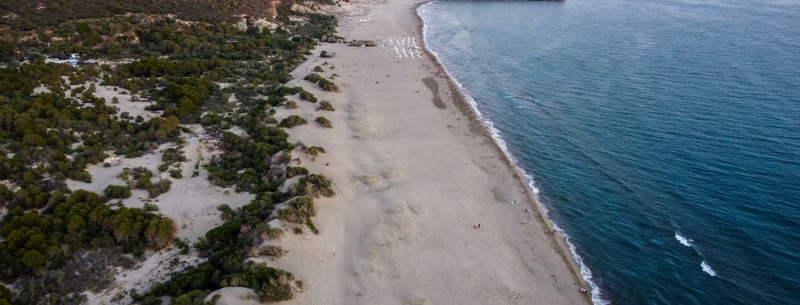
The warm waters of the lagoon make for pleasant swimming if you don’t mind paying the small entrance fee, although the crowds can reach saturation level in high season – in which case the nearby, more prosaic beaches of Belcegiz and Kidrak are better bets.
Olu Deniz is also the starting point for the Lycian Way, Turkey’s only marked trekking route which starts near the Montana Holiday Village on the Fethiye-Olu Deniz road and winds along the coast almost as far as Antalya.
Patara Beaches
Patara, reachable by regular dolmus from Fethiye and Kas in season (otherwise, Fethiye-Kas buses will drop you 4km north of the site), was the principal port of Lycia, famed for its oracle of Apollo and as the birthplace of St Nicholas.
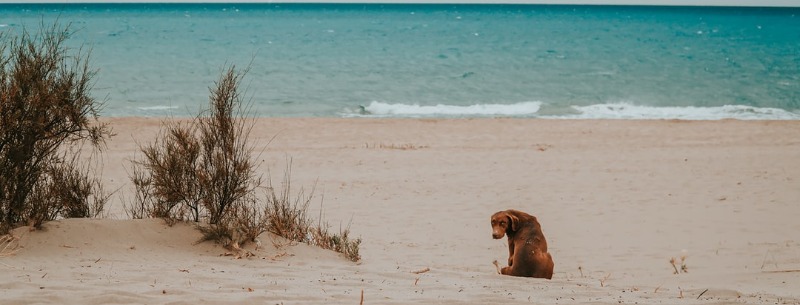
Two kilometers from the modern village of Gelemis, the site is marked by a triple-arched Roman gateway, which is reasonably intact and adjacent to some recently excavated tombs. Also on view are some well-preserved baths and a small temple lodged in a course of the boundary wall.
To the south, 1km from the beach, is a theatre, the cavea of which is now half full of sand – although the stage building is partly intact.
Nowadays Patara is best known for its white sand beach, served by dolmus from Gelemis. It can get a bit crowded in season, but the walk along the dunes towards the river mouth, 7km northwest, turns up more than enough solitary spots. It may be the best in the Mediterranean but it can’t compare with tropical beaches.
If you are planning to visit Patara or Gelemis out of season it’s best to call ahead, as most facilities close down for winter.
